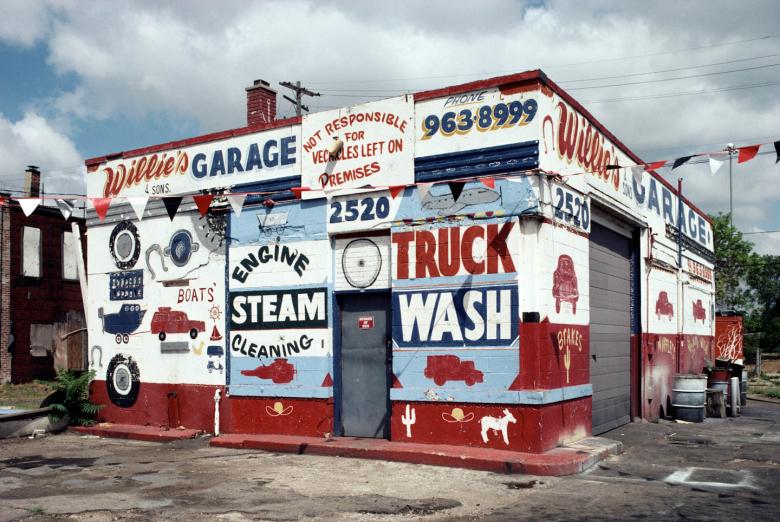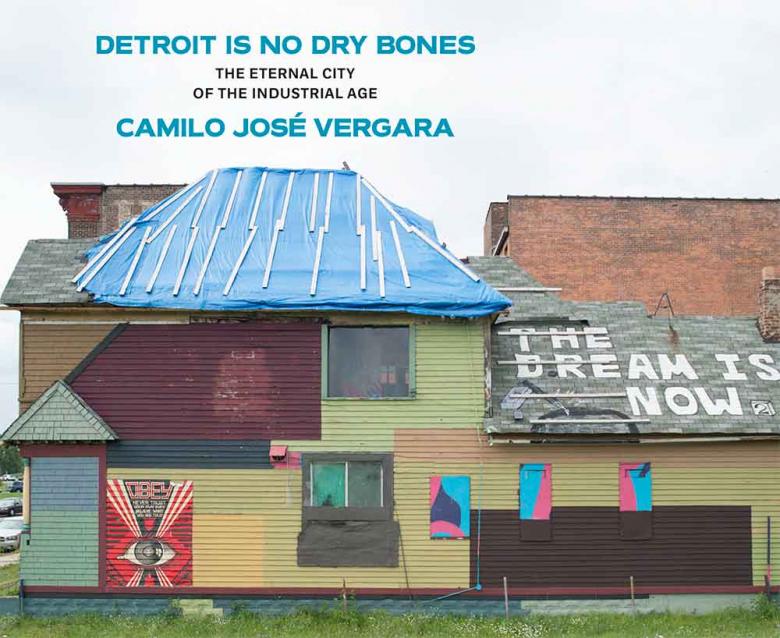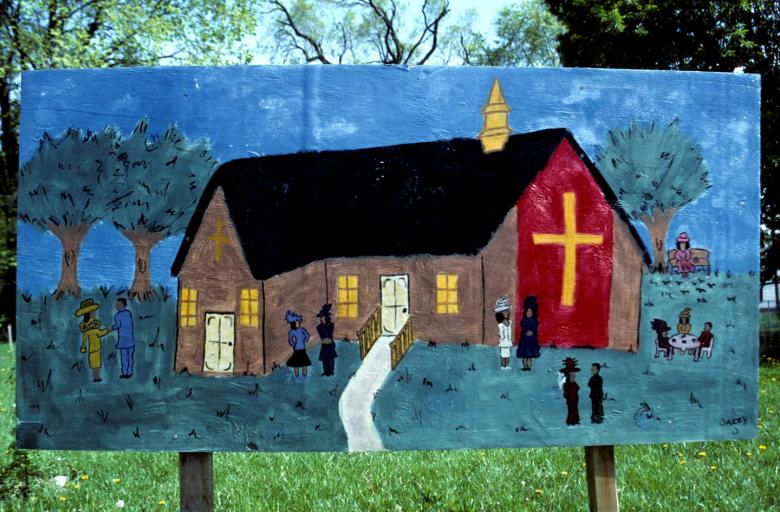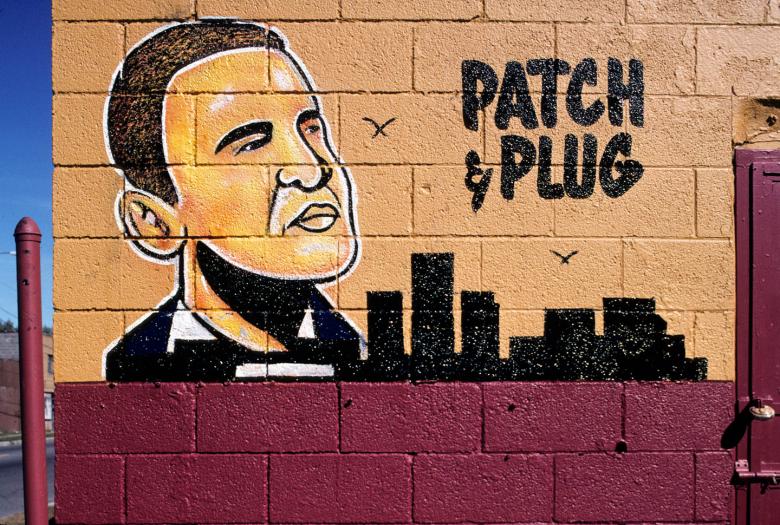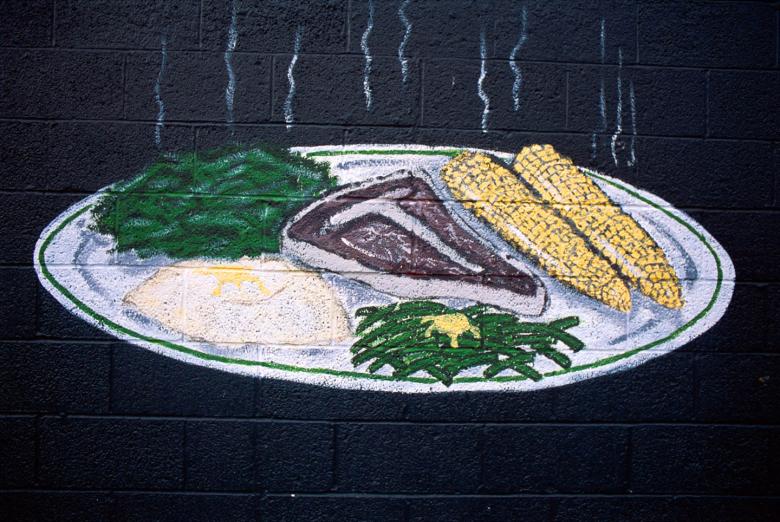The Other Shinola: A Proposal
For photographer and writer Camilo José Vergara, photography "is a tool for continuously asking questions, for understanding the spirit of a place, and, as I have discovered over time, for loving and appreciating cities." One of the cities he has trained his lens on is Detroit, the subject of his latest book and the impetus for "The Other Shinola: A Proposal," in which he speculates on the impact of the popular local brand if it embraced the city's African American culture.
A quarter century ago, black Detroiters felt embattled, believing that the city might not be theirs for very long; now, the effects of demolitions and the exodus of the African American population seem to be proving them right. The neighborhoods continue to lose jobs and there is no solution in sight. A dual city has been developing in which a growing educated population is surrounded by 131 square miles of decline, where poor African Americans survive amidst decaying buildings and empty lots. Residents able to move away do so. A critical mass to sustain small businesses such as dry cleaners or barbershops is lacking. This situation is likely to get worse as Detroit continues to empty and its people scatter. The billionaires that so effectively have transformed the city’s downtown show no interest in investing in the neighborhoods.
The razing of buildings and clearing of land has opened the way for the new. A Detroit of the future may take the form of a largely white paradise of bed and breakfasts, goat farms, fruit orchards, farmers markets, woodlands, beehives, and artist lofts—a city to which people from all over the world can bring their visions, illusions, and dreams and transform them in realities.
Memories of the city as the greatest industrial powerhouse of the past century resonate widely and have given rise to a number of businesses featuring Detroit, such as Pure Detroit, Detroit Mercantile, Carhartt and Shinola. Among these, Shinola is the most famous, a thriving company based in Detroit that turns out simple, elegant designs evoking the weight of the real and projecting an aura of authenticity. Shinola, harking back to the city’s great industrial era, has made a name for itself with beautiful, old fashioned products, including luxury watches, upscale bicycles, handcrafted leather objects and other expensive goods.
Shinola also creates jobs. Its website declares: "Of all the things we make, the return of manufacturing jobs might just be the thing we are the most proud of." The company is all about values. Its motto, "Where American Is Made," conveys a nostalgic, Motor City-centered vision of the past, when Detroit was populated by European immigrants, generating great wealth, and well paid jobs and opportunities for advancement were plentiful. Its products are retrospective reminders of a place where a product that everybody aspired to own and enjoy was made, where the future was once being invented. Shinola, however, overlooks the Detroit of the past half-century.
I would like to see an alternative Shinola. Consider: for the last four decades Detroit has been a majority African American city. As a lifelong documentarian of the ephemeral visual culture of the American ghetto, I believe that the weathered commercial signs with their whimsical lettering, the herds of elephants and giraffes painted on the walls of liquor stores and abandoned buildings, the memorials to the dead found in the city’s neighborhoods, the religious imagery, and the Afrocentric historical murals expressing pride are defining elements of the Detroit spirit.
There are religious murals, for example, in which Christ, the apostles, and the angels are black. I have found others depicting a green or a brown figure of Snow White. Representations of African-American history depict pyramids and civil right figures. The city’s black mayors appear with such achievements as the Renaissance Center and the People Mover. In some, a reversal of the established order is evident in the size of the figures; for instance, a mural at an East Side check-cashing establishment depicts a tiny Henry Ford driving one of his early cars, with a huge portrait of black mayor Coleman Young gazing down from above. In “The History of Detroit” series by Sylvia Burke, buildings such as Stimson Funeral Home and the Motown Museum take precedence over the old GM headquarters and the landmark Fisher building.
I propose that African American visual culture become the inspiration for quality designs of fabrics, shoes, hats and industrial products for sale through "The Other Shinola." I envision, for example, the murals of elephant herds that once seemed to come out of the walls of abandoned buildings being reproduced on shirts and ties. Similarly, steaming plates of fried chicken or t-bone steaks with collard greens and mashed potatoes would decorate crockery. Haircut styles would be printed on bedding and towels. And vintage cars such as Buicks, Chryslers, Packards, Cadillacs and Lincoln Continentals would decorate sheets and comforters. There would be "pride" portraits of Rosa Parks, Joe Louis, Coleman Young, Aaliyah, and Barack Obama printed on hats and drinking glasses.
Additional products, beautiful in their simplicity, could include such motifs as artist Tyree Guyton’s polka dots, his signature decoration on ruins, and the eyes taken from city-sponsored anti-arson posters that, with the inscription "This Building Is Being Watched," stare out of thousands of abandoned buildings. Handmade lettering on churches and stores would be used in designs with the words Jesus, God, and The Lord, while others would display the words "car," "auto," "liquor" and "food."
Is there room for two Shinola stores in one divided city? Shinola represents the world-famous majority white Detroit that existed until 1955, while the designs of poor, minority communities are ignored. Neighborhood artists lack the knowledge necessary to publicize their work; often, they don’t even have an email account and their phones are frequently disconnected. Among those I spoke with, some had spent time in prison, or were homeless, sick, or had turned to other forms of making a living. In contrast, white artists are often represented by galleries, create market spinoffs from their work online, and are able to apply for and receive foundation grants. Local sign painters and commercial artists with a shrinking neighborhood market see their handmade signs replaced by vinyl signs made inexpensively by commercial printers.
The notion of authenticity is almost holiness to many people today, so why not celebrate popular examples of black creativity in graphic design studios? I propose four initiatives. First, no matter how insignificant these inscriptions and pictures seem to the rest of the nation, they need to be preserved. Second, the National Museum of African American History and Culture should acknowledge these works by showcasing the visual expressions and values of segregated America. Third, isolated minority artists should be nurtured so that they can continue their work. Fourth, well-designed products could be created out of street art, and marketed worldwide, with much of the profit going back to the neighborhoods.
By acknowledging the pride of place, assertion of identity, and ability to create beauty that are seen in the art of Detroit’s neighborhoods, a Shinola of the ghetto would celebrate the ephemeral. Otherwise, these phantom representations of the history and achievements of a declining America, "wildflowers" growing amidst the ruins of the Eternal City of the Industrial Age, will not survive.
Camilo José Vergara was named a MacArthur Foundation Fellow in 2002 and received a Berlin Prize Fellowship in 2010. In 2013, he became the first photographer to be awarded the National Humanities Medal. He is author of numerous books, including Silent Cities: The Evolution of the American Cemetery; The New American Ghetto; and, most recently, Detroit Is No Dry Bones: The Eternal City of the Industrial Age.
